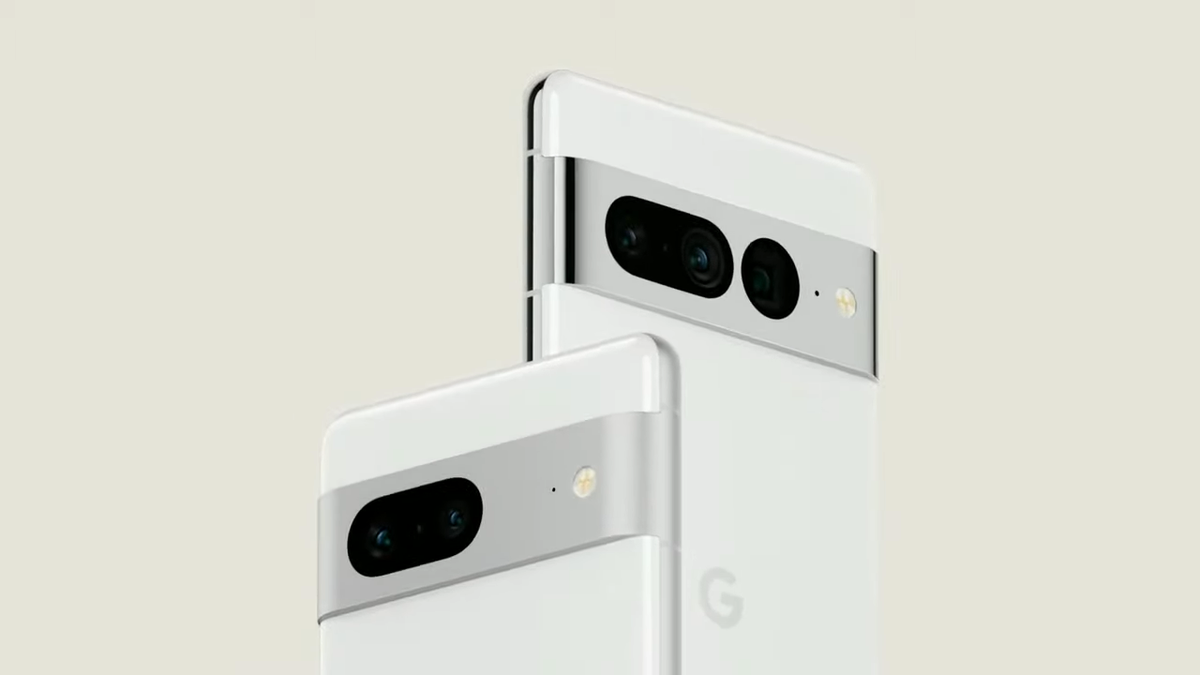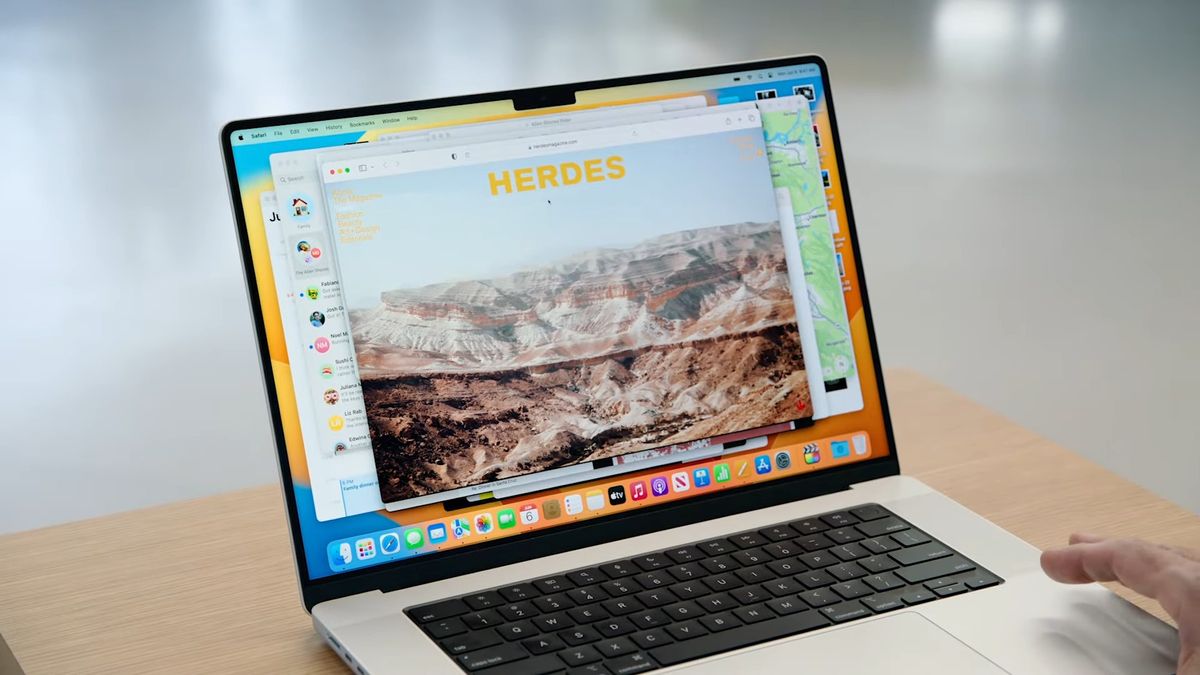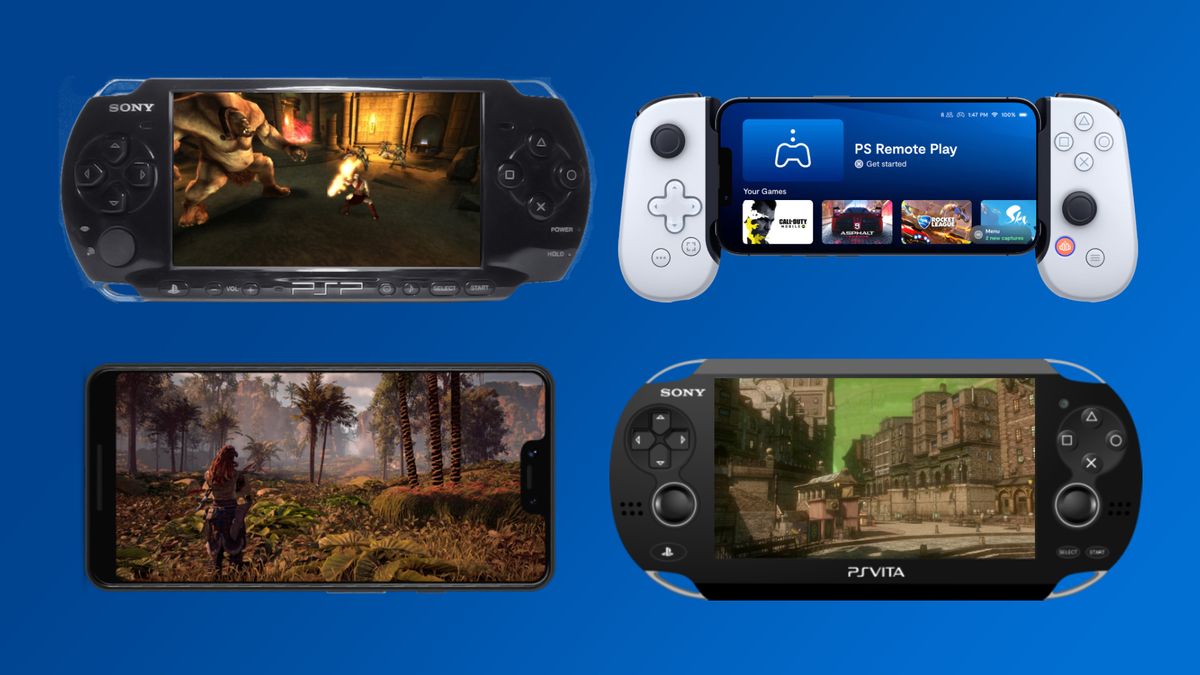With the iPhone 14 and iPhone 14 Pro now up for grabs, all eyes are on the shiny new Dynamic Island, upgraded A16 Bionic, and fresh 48MP camera system. None of this, mind you, is coming to the standard iPhone 14, leaving me wondering why anyone would upgrade to Apple’s latest (standard) flagship.
There is a myriad of reasons the iPhone 14 is not worth buying, which comes as a blow to anyone who patiently waited for this year’s big iPhone upgrade. Fortunately, the iPhone 13 is still a brilliant option, and it’s now even cheaper. But for those after the next flagship smartphone who don’t have the means to pay upwards of $1,000 for the Pro models, it leaves them in a bit of a pickle.
That’s when I shifted my gaze to the Pixel 7, Google’s upcoming flagship phone following the praise and spike in popularity the Pixel 6 received.
“Switching from iOS to Android right now? Absurd!” I get it, especially for those that are wrapped up in Apple’s ecosystem. But Google’s Pixel devices have been making waves for years, and with a new phone looming — one equipped with a next-gen, custom-built Tensor chip and a new, stand-out design — the Pixel 7 could make an interesting case to be your next smartphone. And we know that we are only about a month away from the Pixel 7 release date with the Made by Google event on October 6.
It’s just cheaper
A while back, writer Shubham Agarwal made the switch to iPhone after 7 years with Android. He points out the various reasons for making the big jump, from Apple’s excellent software support to its relatively recent leap in software performance and customization. There’s a reason why the iPhone lands at the top of our best smartphones list, but it’s not all sunshine and roses.
Namely, nabbing the latest iPhone doesn’t come cheap (unless you’re looking at the iPhone SE), and getting into the Apple ecosystem is an even pricier venture.
For example, there’s the new Apple Watch Series 8 (and very costly Apple Watch Ultra), a fresh set of AirPods Pro, and even the iPad to complete the Apple mobile experience. That’s not to say you have to buy these products, and they are impressive devices to get. However, the longer you’re in the ecosystem, the more likely it comes that you jump on the bandwagon.
Then you hear how much the Google Pixel 6 is going for: $599/£599. The Pixel 6 Pro? $899/£859. That’s more or less $200 off what you’d pay for their iPhone counterparts. While the Pixel 7’s price isn’t certain as of yet, it’s likely that Google will stick to those aforementioned prices to stay competitive. Oh, and not to mention the Pixel 6a going for $449/£399. Now that’s cheap and the reason why we recently called it a “wake-up call for mid-range phones.”

As for the devices to pair with it? The Pixel Buds Pro that we called the “best pair of Google earbuds yet,” are priced at $199/£179. The upcoming Pixel Watch is looking a little more costly, at an expected $399 for the LTE model, but the Wi-Fi-only model should be cheaper.
However, Android is more adaptable than iOS, which is why you see everything from the Samsung Galaxy S22 to the Nothing phone (1) using their own software layer over Android. This means it’s more open to third-party accessories, and you can mix and match what you pair with a Pixel phone. That’s not to say you can’t do this with Apple devices either, but if a device like the Apple Watch brings a more complete Apple experience, you’re going to go for it.
All in all, the Pixel 7, and all it brings, is looking a lot less costly than picking up an iPhone 14. It isn’t just the price that matters, however, as the Pixel 7 has something else up its sleeve that aims to impress potential buyers.
Second-gen is promising
There’s no doubt Apple’s A16 Bionic is an absolute powerhouse. Even the A15 chip, wipes the floor with the competition in our Galaxy S22 vs. iPhone 13 and Pixel 6 vs. iPhone 13 face-offs. Speaking of the latter, while the Pixel 6’s custom-made Tensor chip can’t deliver as weighty a punch as the iPhone 13’s A15 processor, you’re still getting a top-end experience.

As Laptop Mag’s Kimberley Gedeon states: “For $599, you’re getting top-notch specs, including 8GB of RAM (more than what Apple offers) and 128GB (same as the iPhone 13). Plus, you’ll get a bigger screen with a 90Hz display while the iPhone 13 is still stuck with a 60Hz refresh rate. Of course, the Pixel 6’s performance can’t touch what the iPhone 13 can do, but again, no mobile phone needs that much power anyway.”
Now, think about what the Google Tensor G2 processor will bring to the table. The Pixel 6 brought Google’s first attempt at their own chip, and while it was known to come with a few quirks, especially in the first few months after it launched, these continue to be ironed out. With a new-gen processor, Google is set to improve on the faults of its first outing, which translates to better processing power at a cheaper price.
For its first shot at making its own chip, the tech giant focused on superior performance through advanced on-device AI for faster and better speech recognition and improved image processing. The second-gen Tensor chip is expected to improve on this with enhanced processing power, better power efficiency, and will bring “even more helpful, personalized features to photos, videos, security, and speech recognition.”

In our Pixel 6 review, Sean Riley notes the seamless navigation of the phone and its fine-tuned gaming performance in demanding apps like Call of Duty: Mobile. If the next Tensor chip tops that, we’re in for an enticing flagship.
Until the Pixel 7 launches, we won’t know exactly what the new processor will offer. But, if it’s a big improvement over the already impressive Tensor chip, there’s a lot to look forward to — especially when compared to the iPhone 14, which offers basically the same chip as the iPhone 13 Pro.
Making the switch less painful
Switching from iPhone to Android can be a painstaking journey, as iOS makes it difficult to disentangle from the multitude of apps you’ve invested in. Luckily, Google has been pushing different methods to make the big switch less of a headache, making the Pixel 7 a viable option (or, at least, I’m convincing myself that it is).
Earlier this year, Google quietly launched a “Switch to Android” iOS app. This allows iOS users to move their photos, videos, contacts, and calendar events to a brand-new Android phone. It walks those switching allegiances through transferring data, and securely helps moves it to an Android-based device.

The app also guides users through setting up the device, along with the method of turning off iMessage “so you don’t miss text messages from friends and family” and copying photos and videos from the iCloud storage.
However, this isn’t anything new. There are a number of ways to move data from iPhone to Android, with Google’s website guiding switchers to “move your stuff from iOS.” However, the app makes the process easier for any smartphone running Android OS.
It comes as no surprise Apple already has its own “Move to iOS” app on the Google Play Store, giving incentives to those interested in the iPhone 14. However, the point is that it’s not impossible to try something new with an Android device. More than ever, with the iPhone 14’s upgrades being a bit of a letdown, now’s the time to think about trying something new. And, if you don’t like it, the “Move to iOS” app will help you out.
The waiting game
The Pixel 7 has a lot going for it, but we won’t know the full extent of its capabilities until it arrives on October 6. When we get our hands on it, we’ll give you a full rundown of how it performs.
The iPhone 14 isn’t the upgrade we were hoping for, but the iPhone 14 Pro and Pro Max appear to be Apple’s true next-gen flagships. If that’s more in tune with your taste, then the Pro models are likely not to disappoint.
But that’s quite a lot of money to spend, and the iPhone 14 doesn’t seem worth your hard-earned cash. There’s always the excellent iPhone 13 and iPhone 13 Pro to grab, but for those looking for an upgrade this year, the Pixel 7 is looking to be a likely contender, and it’s likely to not cost you as much as an iPhone 14. For now, I suggest waiting to see what the Pixel 7 has to offer, as it may be worth the wait over the iPhone 14.








